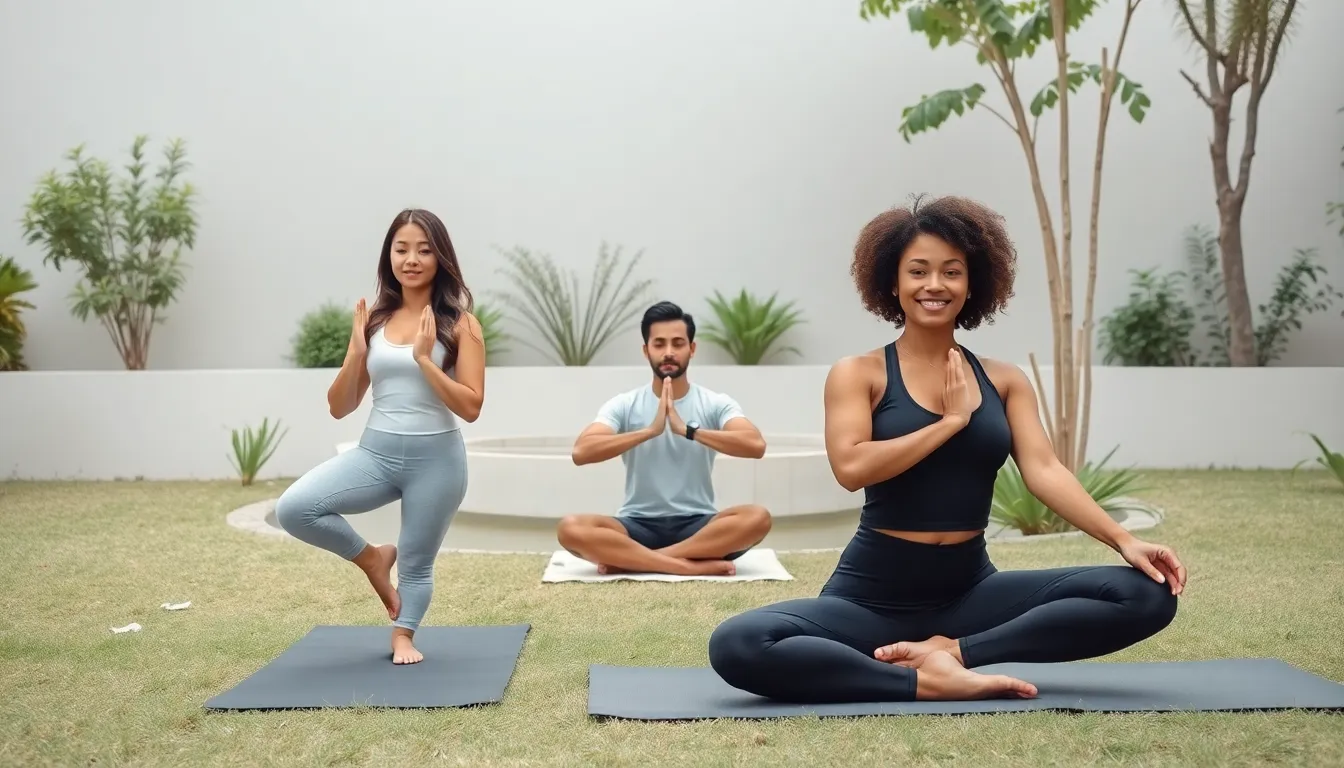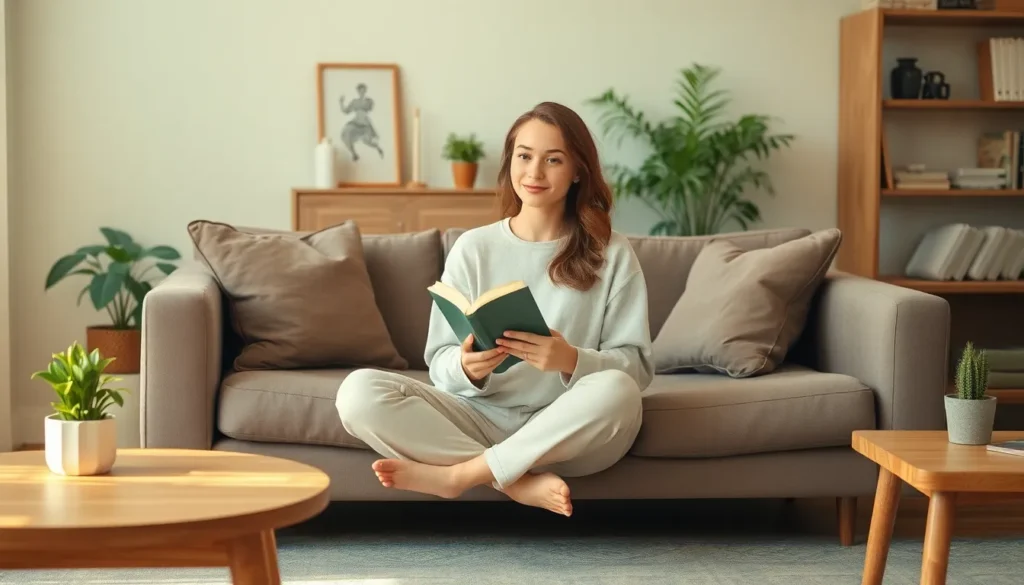In a world overflowing with distractions and endless to-do lists, minimalist routines offer a refreshing escape. Imagine trading chaos for clarity, where less truly means more. By simplifying daily habits, individuals can reclaim their time and focus on what really matters—like finally finishing that book gathering dust on the shelf or enjoying a leisurely cup of coffee without scrolling through social media.
Minimalist routines aren’t just about decluttering physical spaces; they’re about clearing mental clutter too. Picture a life where each task serves a purpose and every moment feels intentional. It’s like giving your brain a spa day—who wouldn’t want that? Embracing minimalism can lead to greater productivity, reduced stress, and even a dash of humor as one learns to laugh at the absurdity of overcomplicated lives. So, let’s dive into the art of minimalist routines and discover how to make simplicity the ultimate sophistication.
Table of Contents
ToggleWhat Are Minimalist Routines?
Minimalist routines represent a lifestyle choice focusing on simplicity and intentionality. By eliminating unnecessary tasks, individuals can prioritize meaningful activities. Embracing these routines cultivates a sense of calm amidst daily chaos.
Adopting minimalist routines often involves assessing and redefining existing habits. This assessment guides individuals toward choosing what truly matters in their lives. Intentionality plays a significant role in this process, fostering clarity in daily actions.
Incorporating fewer commitments can lead to improved productivity. Time spent on essential tasks reduces feelings of overwhelm. Streamlined routines enable individuals to dedicate attention to activities that enhance well-being, such as reading or relaxing.
Implementing minimalist routines encourages mental clarity. Reducing distractions allows for better focus on tasks at hand. As physical spaces declutter, mental clarity often follows, paving the way for enhanced creativity.
A structured approach enhances the effectiveness of minimalist routines. Breaking tasks into manageable segments creates a sense of accomplishment. Prioritizing essential activities also reduces wasted time and effort, promoting a satisfying daily experience.
Overall, minimalist routines offer an inviting pathway to a more intentional life. They present opportunities for individuals to engage deeply with their passions. A commitment to simplicity can transform how one interacts with the world.
Benefits of Embracing Minimalist Routines

Adopting minimalist routines leads to significant advantages in various aspects of life. These benefits include enhanced focus, productivity, and reduced stress.
Increased Focus and Productivity
Fewer distractions enhance clarity and sharpen focus. When individuals simplify their daily tasks, they prioritize essential responsibilities over trivial ones. Clearer goals boost productivity as attention sharpens on meaningful work. Completing important tasks becomes easier, fostering a sense of accomplishment. Creating minimalist routines allows individuals to allocate more time towards personal interests and passions. As a result, creativity flourishes while engagement with daily experiences deepens.
Reduced Stress and Anxiety
Minimalist routines contribute to lower stress levels and reduced anxiety. Individuals experience less pressure as they streamline their commitments and responsibilities. Prioritizing fewer tasks leads to manageable workloads. Clearer mental states follow, allowing for better decision-making. Breathing space emerges as individuals embrace simplicity, fostering tranquility and contentment. Reduced clutter in both physical spaces and mental thoughts promotes peace and enhances overall well-being. Engaging intentionally in daily activities cultivates a balanced lifestyle, contributing to long-term resilience against stressors.
How to Create Your Own Minimalist Routine
Creating a minimalist routine involves introspection and prioritization. Start by evaluating daily habits to identify what truly matters.
Assessing Your Current Lifestyle
Assess current commitments to gauge effectiveness. Review daily tasks and responsibilities. Identify sources of stress and distractions, including excessive commitments. By doing this, individuals can better understand which activities clutter their schedules. Consider how much time each task consumes. Recognizing patterns helps in pinpointing areas that require adjustments. Keeping a journal may aid in this assessment process, revealing habits over time. This reflection fosters clarity and awareness, setting the stage for effective change.
Identifying Essential Activities
Identify activities that align with personal values and goals. Focus on tasks that bring joy or fulfillment. Make a list of priorities, distinguishing between essential and non-essential activities. Engage in activities that enhance well-being and contribute meaningfully to life. Evaluate how much time each essential activity requires, ensuring that they fit within a balanced routine. Group similar tasks together to streamline the process. Emphasizing quality over quantity helps cultivate a more intentional lifestyle. By consciously choosing where to allocate energy, individuals create space for what matters most.
Tips for Maintaining Minimalist Routines
Maintaining minimalist routines requires consistent effort and a willingness to adapt. Individuals can enhance their simplicity journey through practical strategies.
Consistency and Adaptability
Adopting a consistent approach to daily routines fosters a sense of stability. Without regularity, routines can easily become chaotic. Ensuring that essential tasks and activities remain central to the day supports mental clarity. Individuals should revisit their priorities regularly. Assessment promotes ongoing alignment with personal values and goals. Flexibility plays an essential role, allowing adjustments based on changing circumstances. Regular check-ins encourage mindfulness, enabling individuals to stay focused on what truly matters.
Overcoming Common Challenges
Many individuals face obstacles when embracing minimalist routines. Time constraints often present the most significant barrier. They can feel overwhelming, especially when attempting to simplify packed schedules. Identifying specific stressors creates an opportunity to address them directly. Using tools, such as planners or apps, helps streamline commitments. Another challenge involves external expectations from others. Individuals might pressure themselves to conform to societal norms. Setting boundaries becomes crucial in maintaining a minimalist lifestyle. Encouragement from a supportive network can also facilitate persistence in pursuing simplicity.
Real-Life Examples of Minimalist Routines
Individuals across various lifestyles adopt minimalist routines to simplify their days and enhance well-being. For instance, early risers often start their mornings with a consistent five-minute meditation, establishing a calm mindset before engaging in daily tasks. They might also prepare a healthy breakfast while cleaning up their cooking space, maintaining an orderly environment that fosters mental clarity.
Professionals in demanding fields often benefit from structured work schedules that include focused work bursts. Scheduling blocks of time dedicated solely to specific tasks, alongside regular breaks, increases productivity and reduces distractions. They find this approach allows more time to engage in creative hobbies after work, nurturing passions beyond deadlines.
Families may implement minimalist routines by dedicating Saturday mornings to declutter shared spaces. This practice not only organizes their home but also serves as a bonding activity, teaching children the value of intentionality. Sharing responsibilities during these sessions demonstrates teamwork and reinforces a collective sense of purpose.
Students incorporate minimalism by streamlining their study methods. They utilize techniques like the Pomodoro technique, studying in focused intervals followed by short breaks. This method encourages depth of understanding while minimizing procrastination, leading to better academic performance.
Young adults in urban settings often maintain minimalist lifestyles by limiting social engagements. By selectively choosing activities that align with personal values, they avoid burnout and foster meaningful relationships. Social calendars reflect true preferences, enhancing overall satisfaction in their social lives.
These examples illustrate how minimalist routines can enhance everyday life. Each scenario demonstrates the transformative power of prioritization, focusing on what truly matters while discarding excess. Embracing simplicity can lead to clarity in both mental and physical spaces.
Adopting minimalist routines can truly transform daily life. By focusing on simplicity and intentionality, individuals pave the way for a more fulfilling existence. As they streamline commitments and declutter both their physical and mental spaces, they create room for what genuinely matters.
This approach not only enhances productivity but also fosters creativity and reduces stress. Embracing minimalism allows for a deeper connection with personal passions and relationships. Ultimately, the journey towards a minimalist lifestyle invites a refreshing perspective on life’s complexities, encouraging individuals to savor each moment with clarity and purpose.





